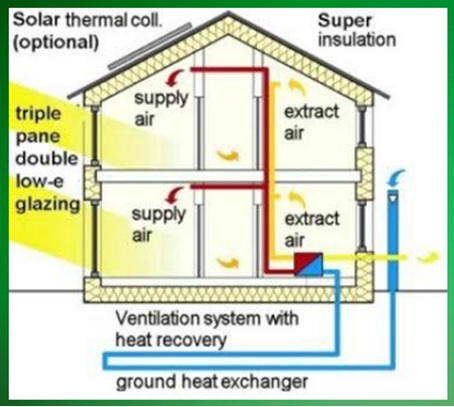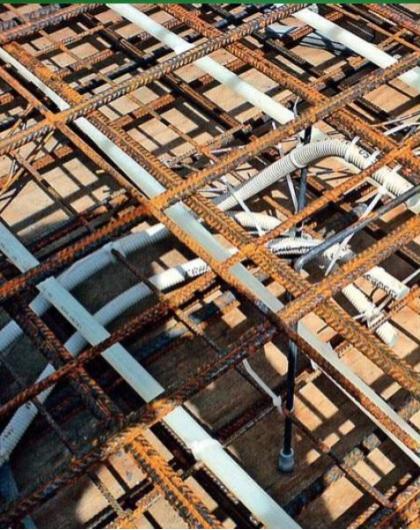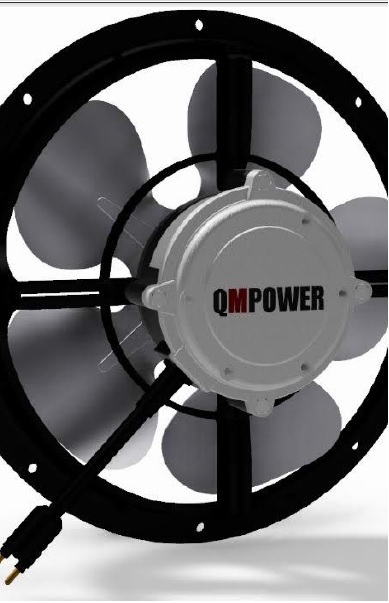SHARE
Thermal Insulation Technologies for Energy Efficient Buildings
Most of the buildings where we live, work and spend our free time were built many years ago, when thermal insulation was not really taken into consideration.
The lack of proper insulation leads to a waste of energy and it makes it very difficult and costly to cool down or warm up these buildings. However, with the continuous arrival of new technologies, many new ways to improve the energy efficiency in buildings have arisen.
Regarding building classification, we can distinguish between residential, commercial or industrial buildings. Among them, the industrial sector has a great importance, as energy efficiency has not been an important topic historically.
As it was mentioned before, we can see great concern is being raised on this issue, together with huge advances in energy efficiency. For that reason, here are some of most trendy approaches towards energy efficiency in industrial buildings:
Insulation: Insulating buildings from the surrounding environment is an excellent way to become more energy-efficient. One example is the Passivhaus standard, a way of building insulation that is already working in the residential sector, allowing up to a 90% reduction in the cooling and heating needs compared to average building blocks. This allows those buildings to use only 15 kWh to heat each square meter of living space in warm climates.
 This reduction is possible through a great thermal insulation (including triple glass windows), the lack of woodwork with thermal breaks and a mechanical ventilation system that uses heat exchangers in order to recover heat from the renewed air. Therefore, that big insulation allows Passivhaus buildings to take a big amount of the needed heat from people and the sun. There, this technology has a great potential and many companies are working to adapt everything to reach the same efficiency as in residential buildings but for a much bigger surface, with low cost.
Thermo active building systems (TABS): This technology consists of an embedded water-based surface heating and cooling system, where the pipe is embedded in the central concrete core of a building. With this, we can reduce the energy costs and cooling system components by using the heat power of the day, which is absorbed by the embedded water and exploited during the night to fight the cold outside, or the cooling power of the night, which is exploited during the warm weather during the day. With this system, we mitigate and delay a lot the effect of the outside weather, needing far less cooling or warming capacity.
This reduction is possible through a great thermal insulation (including triple glass windows), the lack of woodwork with thermal breaks and a mechanical ventilation system that uses heat exchangers in order to recover heat from the renewed air. Therefore, that big insulation allows Passivhaus buildings to take a big amount of the needed heat from people and the sun. There, this technology has a great potential and many companies are working to adapt everything to reach the same efficiency as in residential buildings but for a much bigger surface, with low cost.
Thermo active building systems (TABS): This technology consists of an embedded water-based surface heating and cooling system, where the pipe is embedded in the central concrete core of a building. With this, we can reduce the energy costs and cooling system components by using the heat power of the day, which is absorbed by the embedded water and exploited during the night to fight the cold outside, or the cooling power of the night, which is exploited during the warm weather during the day. With this system, we mitigate and delay a lot the effect of the outside weather, needing far less cooling or warming capacity.
 Thermo Active Building Systems (TABS)
Thermo Active Building Systems (TABS)
Refrigeration systems: These are usually carried out with electric motors, which are usually the shaded pole motor (first designed in 1888) and the electronically commutated motor (ECM, first designed in 1962), what shows that these technologies have not evolved during many years. However, QM Power has discovered a new design, the Q-Sync fan motor, which is currently being tried in different supermarkets around the USA. With this synchronous 6-12 watt motor, QM Power have achieved an efficient shift from DC, which is needed to turn on the motor, to AC, which is supplied from the grid, achieving energy cuts of 30% compared to ECM and 80% compared to shaded-pole motors. This results in big energy savings and therefore in a much more efficient building. Trendy Refrigeration System
Trendy Refrigeration System
In conclusion, as it was showed here, energy efficiency in continuously developing and improving, and these four technologies will for sure contribute to the further advance of this trend. Energy efficiency is one of the main engineering challenges that experts are currently facing. Do you think you can solve it? Join our engineering community here
 This reduction is possible through a great thermal insulation (including triple glass windows), the lack of woodwork with thermal breaks and a mechanical ventilation system that uses heat exchangers in order to recover heat from the renewed air. Therefore, that big insulation allows Passivhaus buildings to take a big amount of the needed heat from people and the sun. There, this technology has a great potential and many companies are working to adapt everything to reach the same efficiency as in residential buildings but for a much bigger surface, with low cost.
Thermo active building systems (TABS): This technology consists of an embedded water-based surface heating and cooling system, where the pipe is embedded in the central concrete core of a building. With this, we can reduce the energy costs and cooling system components by using the heat power of the day, which is absorbed by the embedded water and exploited during the night to fight the cold outside, or the cooling power of the night, which is exploited during the warm weather during the day. With this system, we mitigate and delay a lot the effect of the outside weather, needing far less cooling or warming capacity.
This reduction is possible through a great thermal insulation (including triple glass windows), the lack of woodwork with thermal breaks and a mechanical ventilation system that uses heat exchangers in order to recover heat from the renewed air. Therefore, that big insulation allows Passivhaus buildings to take a big amount of the needed heat from people and the sun. There, this technology has a great potential and many companies are working to adapt everything to reach the same efficiency as in residential buildings but for a much bigger surface, with low cost.
Thermo active building systems (TABS): This technology consists of an embedded water-based surface heating and cooling system, where the pipe is embedded in the central concrete core of a building. With this, we can reduce the energy costs and cooling system components by using the heat power of the day, which is absorbed by the embedded water and exploited during the night to fight the cold outside, or the cooling power of the night, which is exploited during the warm weather during the day. With this system, we mitigate and delay a lot the effect of the outside weather, needing far less cooling or warming capacity.
 Thermo Active Building Systems (TABS)
Thermo Active Building Systems (TABS)Refrigeration systems: These are usually carried out with electric motors, which are usually the shaded pole motor (first designed in 1888) and the electronically commutated motor (ECM, first designed in 1962), what shows that these technologies have not evolved during many years. However, QM Power has discovered a new design, the Q-Sync fan motor, which is currently being tried in different supermarkets around the USA. With this synchronous 6-12 watt motor, QM Power have achieved an efficient shift from DC, which is needed to turn on the motor, to AC, which is supplied from the grid, achieving energy cuts of 30% compared to ECM and 80% compared to shaded-pole motors. This results in big energy savings and therefore in a much more efficient building.
 Trendy Refrigeration System
Trendy Refrigeration SystemIn conclusion, as it was showed here, energy efficiency in continuously developing and improving, and these four technologies will for sure contribute to the further advance of this trend. Energy efficiency is one of the main engineering challenges that experts are currently facing. Do you think you can solve it? Join our engineering community here
